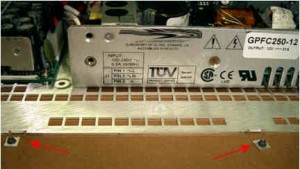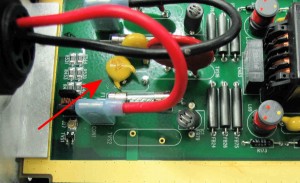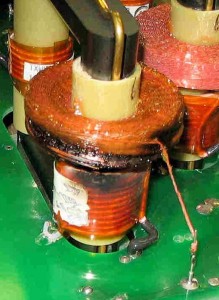Product failures in HALT testing are defined as either the cessation of any functions or an out-of-specification condition for any performance characteristic. When a failure occurs, it is documented in DES’s HALT log. The exact time and test condition when each failure occurred is noted.
If the product fails to operate, the temperature or vibration will be changed toward ambient room conditions followed by a short dwell period to see if the product recovers. If the product is non-operational after dwelling at ambient conditions, trouble shooting will take place to find the failed component. The failed component will then be removed, repaired or replaced with a new component (as is practical) in an effort to expand the test stresses.
Relevant Failures

All HALT failures are relevant unless it is determined that the failure was caused by a condition external to the product which is not a test requirement. Relevant failures may include, but are not limited to the following:
- Design and Workmanship Failures
- Failures caused by Poor Manufacturing
- Component Part Failures
- Multiple Failures
- Intermittent Failures
- Built-in-Test Failures
All relevant failures represent an opportunity for improvement and should be thoroughly investigated to determine their root cause. All relevant failures should be evaluated as to whether or not they can be corrected with a reasonable amount of effort and cost. However, all failures that prevent a product from functioning in its normal environment should be fixed! Figures 1 through 3 show examples of relevant HALT failures.
In Figure 1, the mounting tabs used to hold a power supply in place failed during vibration. Larger tabs with better stress relief grooves should be used in this case to better withstand the vibrations. The capacitor leads in Figure 2 failed due to repeated fatigue stresses from vibration. Improved mounting such as placing an adhesive under the capacitor could be used to prevent this type of failure which is common for large components connected by thin metal leads.

In the case of temperature related failures such as seen in Figure 3, the temperature at which failure occurred should be well outside of the expected operating range of the equipment.

Even in this case, an evaluation should be performed to determine if a component with an improved temperature rating can be economically substituted because the failing component may be a weak point in the product design.
Non-Relevant Failures
Failures listed below may be considered as non-relevant:
- Failures directly attributable to erroneous product manufacturing or operation.
- Failures resulting from improper test setup or procedure.
- Dependent failures, unless caused by degradation of items of known limited life.
- Failures occurring during test “down-time” such as during troubleshooting on the bench unrelated to the HALT Procedure.
Care should be taken when determining if a failure is non-relevant as this may result in missing an opportunity for product improvement.